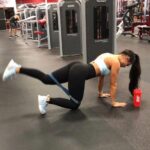Are you looking to adopt a fitness routine that will help you achieve your health and wellness goals? Developing a regular fitness routine is crucial for overall well-being, and it can have a positive impact on both your physical and mental health. In this article, we will explore the importance of establishing a fitness routine, understanding how to set achievable fitness goals, finding the right workout that fits your lifestyle, and tips for starting your fitness journey.
Setting specific fitness goals is essential for staying motivated and focused on your wellness journey. Whether you want to improve your strength, lose weight, or simply enhance your overall health, having clear objectives will guide you in choosing the most effective fitness routine for your needs. It’s important to establish realistic and achievable goals that are tailored to your individual capabilities.
When it comes to selecting the right fitness routine, there are various factors you should consider, such as your schedule, preferences, and current physical condition. Finding a workout that aligns with your lifestyle will make it easier for you to stick with it in the long run.
By taking these factors into account, you can ensure that you choose a fitness regimen that is both enjoyable and sustainable for your daily life. Finding the right balance between cardio, strength training, flexibility exercises, and even mindfulness activities is key to creating a holistic approach to your fitness routine.
Setting Your Fitness Goals
Setting fitness goals is an essential step in creating a successful fitness routine. Whether you want to lose weight, build muscle, increase endurance, or improve overall health, having clear and specific goals will help you stay focused and motivated. It is important to set realistic and achievable goals that align with your abilities and lifestyle. For example, if your goal is to run a marathon, start by setting smaller goals such as running a 5k or 10k race first.
When determining what you want to achieve with your fitness routine, it is crucial to consider both short-term and long-term goals. Short-term goals can provide immediate motivation and a sense of accomplishment, while long-term goals give you something to work toward over time. It’s also important to regularly reassess your fitness goals as you make progress and your fitness level improves.
It is recommended to use the S.M.A.R.T goal-setting method – Specific, Measurable, Achievable/Attainable, Relevant/Realistic, Time-bound when setting your fitness goals for better clarity and actionability.
| Fitness Goal | Example |
|---|---|
| Specific | Run a 5k race in under 30 minutes |
| Measurable | Lift weights for 30 minutes at least 3 times per week |
By setting clear and well-defined fitness goals, individuals can stay motivated, track their progress more effectively, and ultimately achieve greater success in their fitness routine.
Choosing the Right Fitness Routine
When it comes to choosing the right fitness routine, it’s essential to find a workout that fits your lifestyle. With countless options available, from high-intensity interval training (HIIT) to yoga and weightlifting, it can be overwhelming to determine which one is best for you. However, by considering factors like your schedule, preferences, and fitness goals, you can find a routine that not only helps you stay in shape but also brings joy and fulfillment to your life.
Finding Your Fitness Passion
One of the keys to choosing the right fitness routine is to find an activity that you genuinely enjoy. Whether it’s running outdoors, attending group exercise classes at a local gym, or practicing martial arts, discovering a workout that excites you can make all the difference in sticking to a consistent fitness regimen.
By experimenting with different activities and paying attention to how each makes you feel physically and mentally, you can uncover the exercise that resonates with you the most.
Considering Your Schedule
In today’s fast-paced world, time is often a barrier to maintaining a consistent fitness routine. When selecting a workout that fits your lifestyle, consider your daily schedule and obligations.
If you have a packed agenda with little free time, shorter workouts like 30-minute circuit training may be more practical than hour-long sessions at the gym. By aligning your fitness activities with your availability, you can integrate them seamlessly into your daily routine without feeling overwhelmed or stressed.
Getting Started
Starting a fitness routine can be overwhelming, but it doesn’t have to be. The most important thing is to begin, and the rest will follow. One tip for beginning your fitness journey is to start with something you enjoy.
Whether it’s yoga, running, dancing, or weightlifting, finding an activity that brings you joy will make it easier to stick with your routine. Another important tip is to set realistic goals. Setting attainable milestones will give you a sense of accomplishment as you progress.
It’s also crucial to find a reliable support system when starting a fitness routine. This could mean finding a workout buddy who can hold you accountable or joining a fitness class with like-minded individuals. Having someone to share your journey with can make the process more enjoyable and help keep you motivated.
Lastly, be sure to make time in your schedule for your workouts. Treat your exercise time as non-negotiable and prioritize it just like any other important commitment in your life.
According to research, 80% of Americans don’t meet recommended exercise guidelines and yet another 80% fail their New Year’s resolution by February so getting started on the right foot when beginning a fitness regimen is key.
| Tips for Beginning Your Fitness Journey | Benefits |
|---|---|
| Find an activity that brings you joy | Makes it easier to stick with your routine |
| Set realistic goals | Gives a sense of accomplishment as you progress |
| Find a reliable support system | Makes the process more enjoyable and helps keep you motivated |
Week-by-Week Progress
Tracking your progress is an essential part of any fitness routine. By monitoring and measuring your improvements, you can stay motivated and focused on achieving your fitness goals. One effective way to track your progress is by keeping a fitness journal or using a workout app to record the details of each workout session. This can include the duration of your workout, the type of exercises performed, and the intensity level.
In addition to tracking your physical activity, it’s also important to monitor other aspects of your fitness journey, such as changes in your body measurements, weight, and overall energy levels. This can provide valuable insights into how your fitness routine is impacting your overall health and well-being. By setting specific metrics and regularly assessing them, you can more accurately gauge your progress over time.
Another effective method for tracking improvements is by setting short-term and long-term goals. By breaking down larger goals into smaller, achievable targets, you can celebrate milestones along the way and stay motivated to continue with your fitness routine.
Whether it’s increasing the number of push-ups you can do in a minute or improving your running pace, having specific benchmarks to work towards can keep you focused and committed to your fitness journey. Remember that progress may not always be linear, so it’s important to be patient with yourself and celebrate every small victory along the way.
Overcoming Setbacks
When it comes to maintaining a fitness routine, setbacks are inevitable. Whether it’s an injury, illness, or just a lack of motivation, there are times when sticking to your exercise plan becomes difficult. However, overcoming these challenges is essential for staying on track with your fitness goals.
Here are some tips for dealing with setbacks and staying motivated:
1. Stay positive: It’s important to maintain a positive attitude, even when faced with obstacles. Remember that setbacks are a normal part of any fitness journey and focus on the progress you have made so far.
2. Adjust your expectations: If you’re dealing with an injury or illness, it’s important to adjust your fitness goals accordingly. This might mean taking a break from certain activities or modifying your workout routine to accommodate your condition.
3. Seek support: Don’t be afraid to reach out for support from friends, family, or a fitness community. Surrounding yourself with like-minded individuals can provide encouragement and motivation during challenging times.
Remember that setbacks are temporary, and by staying focused on your long-term goals and making adjustments as needed, you can overcome any obstacle that comes your way in your pursuit of a healthier lifestyle.
Understanding the Role of Nutrition
When embarking on a fitness journey, it is crucial to understand the impact of nutrition on your overall health and fitness goals. Your diet plays a vital role in supporting your fitness routine and can greatly influence your performance, recovery, and results.
Balanced Diet for Optimal Performance
In order to get the most out of your fitness routine, it is important to fuel your body with the right nutrients. A balanced diet that includes a variety of fruits, vegetables, lean proteins, whole grains, and healthy fats can provide the energy and nutrients needed to support your workouts. Carbohydrates are particularly important for providing the energy necessary for physical activity, while protein helps in muscle repair and growth.
Hydration and Fitness
Proper hydration is also an essential part of any fitness routine. Staying hydrated helps regulate body temperature, lubricate joints, and transport nutrients throughout the body. It is recommended to drink water before, during, and after exercise to maintain optimal hydration levels.
Meal Timing and Planning
Additionally, meal timing and planning can play a significant role in complementing your fitness routine. Eating a balanced meal or snack before a workout can provide the necessary fuel for sustained energy during physical activity. Moreover, refueling with a combination of protein and carbohydrates within two hours after exercising can aid in muscle recovery.
By understanding the role of nutrition in your fitness routine, you can optimize your performance and progress towards achieving your fitness goals. Making informed choices about what you eat can have a profound impact on not only your physical health but also on your overall well-being.
The Importance of Rest and Recovery
After weeks of diligently following a fitness routine, it is essential to recognize the significance of rest and recovery in achieving your fitness goals. Rest and recovery are just as important as the workouts themselves because they allow your body to repair and rebuild muscle tissue, prevent fatigue, and reduce the risk of injury. Here are some key points to consider when it comes to taking care of your body through proper rest and recovery:
- Implementing rest days into your fitness routine is crucial for allowing your muscles to recover. Overtraining can lead to burnout and injuries, so be sure to include scheduled rest days in your workout plan.
- Getting enough sleep is vital for overall health and well-being. Aim for 7-9 hours of quality sleep each night to help your body recover from intense workouts and maintain energy levels throughout the day.
- Hydration plays a significant role in the recovery process. Drinking an adequate amount of water helps regulate body temperature, deliver nutrients to cells, and aid in muscle recovery after exercise.
In addition to these tips, incorporating stretching, foam rolling, and other forms of self-care can also aid in your body’s recovery process. Taking the time to allow your muscles to heal will not only improve performance but also prevent the risk of overuse injuries. Always listen to your body’s signals – if you feel fatigued or overly sore, consider taking a day off from intense physical activity.
Remember that rest and recovery are essential components of a fitness routine that should not be overlooked. By prioritizing self-care practices such as sleep, hydration, and active recovery methods, you can optimize your overall health and well-being while working towards achieving your fitness goals.
Celebrating Your Success
In conclusion, maintaining a fitness routine is an essential part of living a healthy lifestyle. It not only helps you stay physically fit but also contributes to your overall well-being. By setting clear fitness goals and choosing the right workout that suits your lifestyle, you can ensure that you are on the right path to achieving success in your fitness journey.
As you progress through your fitness routine, it is important to track your improvements week by week. This will not only help you stay motivated but also allow you to make necessary adjustments to your workout plan. Additionally, understanding the role of nutrition and prioritizing rest and recovery are crucial components of a successful fitness routine.
Celebrating your success is equally important as reflecting on your achievements will give you a sense of accomplishment and motivate you to set new goals for the future. Whether it’s improving your endurance, increasing muscle mass, or simply feeling more energized, recognizing how far you have come in your fitness journey will propel you forward towards continued success in reaching new milestones.
Remember to embrace setbacks as learning opportunities and continue to push yourself to reach new heights in your fitness routine.
Frequently Asked Questions
What Is the Best Routine for Fitness?
The best routine for fitness is one that combines cardiovascular exercise, strength training, and flexibility work. This could mean doing a mix of running, weight lifting, and yoga or Pilates to ensure a well-rounded approach to fitness.
What Is a Healthy Fitness Routine?
A healthy fitness routine is one that prioritizes regular physical activity, balanced with rest and recovery. It should include a variety of exercises that work different muscle groups and promote overall health and wellness.
What Is a Typical Gym Routine?
A typical gym routine might include a warm-up on the treadmill or elliptical machine, followed by weight training for different muscle groups on different days (e.g. chest and triceps one day, back and biceps another). It may also incorporate cardio activities or classes like spin or Zumba for variety.

Passionate about providing useful information to anyone with an interest in the field of Personal Training, I strive to pass on to our readers quality information and to answer any questions about Personal Trainers, the work they do and how to become one.





